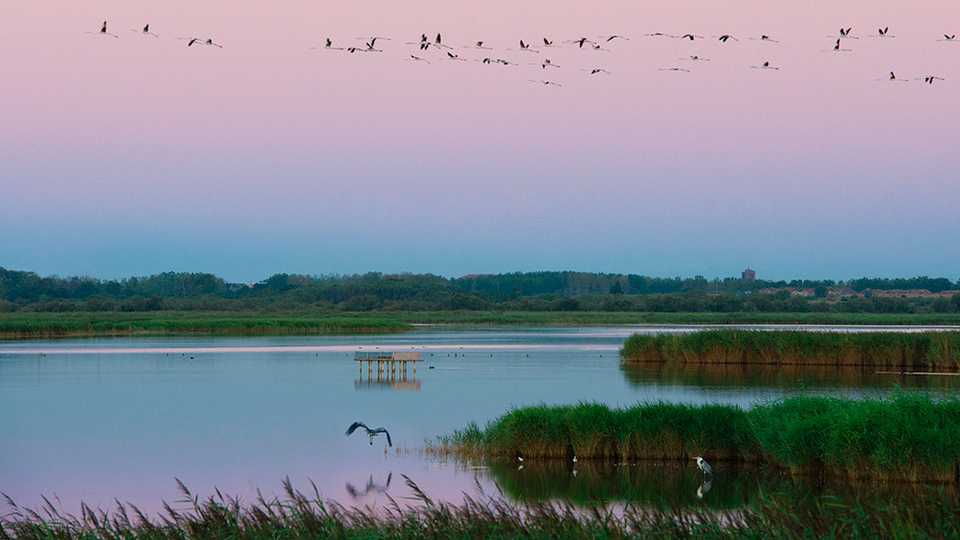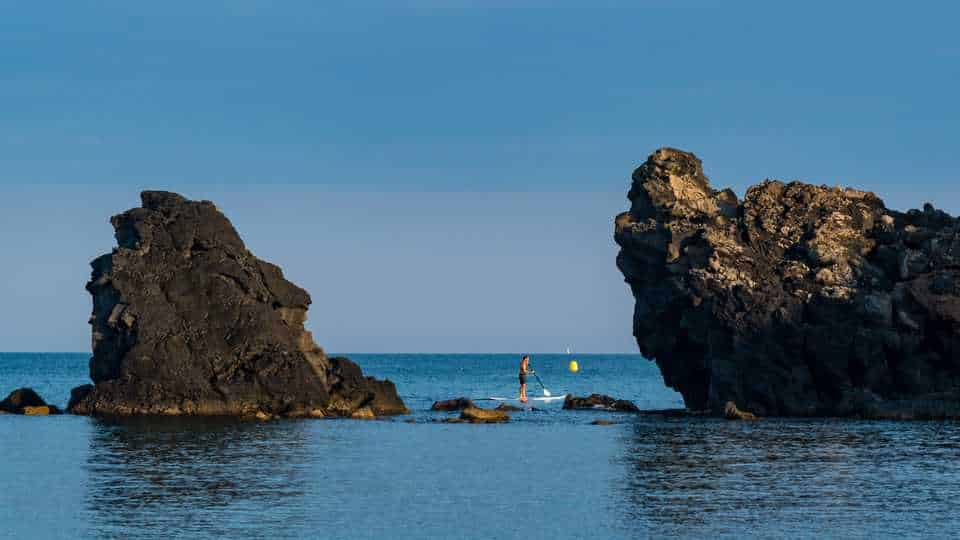An exceptional environment, classified Natura 2000
Where the river runs into the sea, the Cap d’Agde has numerous qualities to seduce « green tourists”! The natural areas are carefully protected to preserve the heritage and biodiversity, both on land and in the sea, with most of them classified Natura 2000*: the Hérault river, the temporary pools of Notre-Dame, the Bagnas lagoons (National Nature Reserve), and the largest, the marine area of the Agde coast, “Posidonies du Cap d’Agde”. In fact, the whole coast is classified Natura 2000!
The Bagnas National Nature Reserve
Since 1983, the Bagnas lagoons have been classified Nature Reserve. This reserve, extending over 600 hectares is made up of wetlands (lagoon and marshes), dunes, coastal heaths, salt meadows and agricultural zones. Between land and sea, the Bagnas National Nature Reserve is a complex, precious ecosystem. Made up of wild lagoons, it plays an important role of purification, thanks to its biological activity. Lagoons and banks provide a home for numerous species of birds that nest, feed or rest there in their thousands during their annual migration. They also shelter numerous species of plants, including some rare and threatened varieties.

Discover birds nesting in unspoilt nature
By foot, bike, or horse, discover the Reserve’s birdlife.
You will find nearly 250 species of birds including the osprey, black stork, flamingo, swallow, avocet and little egret. In winter, you can witness large gatherings of ducks, teals, common pochards, mallard ducks and shovellers.
Other interesting species that you might come across include the black-winged stilt, the Kentish sandplover, the greater short-toed lark and the Eurasian bittern.
You can also appreciate the purity and calm of the landscape, in the soft light of the morning, or at sunset.
The marine area « Posidonies du Cap d’Agde”, classified Natura 2000 Site
The “Posidonies du Cap d’Agde” site extends over 6113 hectares, and protects precious natural riches such as the Posidonia meadows, home to many species such as the fan mussel; the Coralligeneous, with its rich aquatic life, and also a famous geological heritage: the island of Brescou with its rocky depths of the Grande Conque, the Roche Notre-Dame and the Tables.
* A Natura 2000 site is a natural site classified by the European Union as having great natural value due to the wildlife and plant life found there.
Did you know?
The rocks that punctuate the coast are sensitive sites which support the reproduction of marine life. Don’t take shellfish (mussels, oysters…) or crustaceans (crabs, sea urchins…) as they are crucial for Mediterranean biodiversity.

Practical informations
Why not be tempted by a guided tour of the Bagnas National Nature Reserve!
The “Discover the lagoon and its birds » event, with loan of observation equipment, is run all year round, on Saturdays from 9 am to 11.30 am. Booking required on Fridays before 5 pm.
5€/pers. Free for children under 12.
Groups from 5 pers.: 5€/pers.
There are other discovery possibilities – at sunset, by bike, on horseback…
Information: ADENA – Association de Défense de l’Environnement et de la Nature des Pays d’Agde (Association for Protection of the Environment and Nature in the Agde area) Maison de la Réserve. Domaine du Grand Clavelet. Route de Sète Reception on site, every day except on weekends.
Tel. : 07 81 14 71 14 or 04 67 01 60 23
E-mail – www.adena-bagnas.fr
The town of Adge (Direction du Milieu Marin) ensures the preservation of the Natura 2000 site « Posidonies du Cap d’Agde”, and carries out actions to raise awareness about the marine environment, in particular around the Underwater trail.

